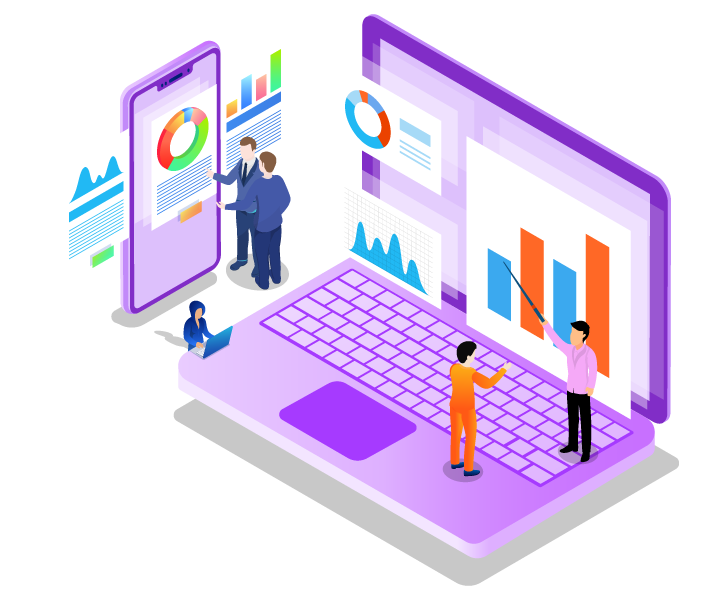The way we manage and manage our devices in today’s workplace has been drastically altered. As the world shifts to hybrid and remote work arrangement, the traditional method of distributing laptops within the office has given way to a more operationally complex workflow known as Device Lifecycle Management (DLM). Managed Desktop Service has emerged as a crucial component of this transformation, helping companies optimize their processes as well as improve the experience of their users, eventually leading to improved productivity.

Device Lifecycle Management, often referred to as DLM, encompasses the entire journey of a device from acquisition to retirement. It involves a series of procedures that cover procurement and provisioning, maintenance and end-of-life disposal. DLM in the old office was a relatively simple process. The remote work environment has added layers and challenges.
In the new world IT managers must deal by the demands of asset management and logistics every stage of the device’s lifecycle. This shift is driven by the desire of accommodating the diverse needs of remote workers and employees who are hybrid. Managed Desktop Service, a revolutionary new technology which has revolutionized the market is a major change for many companies.
Managed desktop service Remote work enabler
Managed Desktop Service, also known as MDS, is a comprehensive service designed to streamline the management of end-user devices. It is an invaluable asset to IT managers because it provides a comprehensive solution for device provisioning and maintenance. Managed Desktop Service helps organizations overcome the challenges of remote work.
Enhancing End-User Experiences One of the main goals of Managed Desktop Service is to improve the user experience. It tackles common problems that remote workers encounter including slow repairs, a delay in equipment setup, and lengthy software upgrades. MDS increases job satisfaction and productivity by ensuring employees have access to the tools and resources they need when they are required.
Managed Desktop Service streamlines device provisioning for remote employees. MDS allows companies to quickly and efficiently share laptops and other equipment to new employees so that they can work right away. This helps reduce the stress employees feel when they need to wait in line for their equipment or delay their work.
Fast Software Updates: Managed Desktop Service helps IT teams manage patches and updates for software more efficiently. It can schedule updates during non-disruptive times, ensuring that employees do not experience interruptions in the course of their work. This reduces the likelihood of interruptions to employees in meetings or video calls.
Quick Repairs and Replacing: When remote workers work in a remote location, prompt repairs or replacements of equipment that is malfunctioning are essential. Managed Desktop Service providers often have solid support systems and ensure that employees get prompt assistance when their devices are experiencing issues. This is not just a way to reduce downtime, but also lowers the threat of cyber-security threats that arise from the use of personal or unsecure devices in the event of an emergency.
Cost Efficiency: By outsourcing the management of devices used by users to a managed Desktop Service provider, organizations can optimize expenses. This eliminates the requirement to employ staff internally to manage devices, reduces interruptions due to outdated equipment and enhances the value for managing the lifecycle of devices.
The impact on employee engagement and turnover
Employee engagement and retention are directly influenced by a seamless and efficient lifecycle management of devices. Employees who are frustrated because of issues with their devices could become disengaged and might even think about seeking opportunities to expand their business. The impact of an inefficient DLM on employee engagement can be quite significant.
Companies who invest in Managed Desktop Service, and a Device Lifecycle Management Strategy can make for a more enjoyable and pleasant work environment. Employees with access to the appropriate tools, experience fewer interruptions and receive timely support when issues arise are more likely to remain with their employer. This could reduce the amount of employees leaving and the associated costs for hiring and training.
In reducing Cybersecurity Risks
In this day and age of remote work cybersecurity is a top concern for organizations. If employees do not have adequate devices management, they may use their own devices or devices that are not secured, which could pose an immediate threat to data security and the network of the business.
Many managed desktop service providers implement strong cybersecurity protocols. They will ensure that all devices have the latest security patches and that data has been encrypted and protected. This proactive approach allows companies to manage risks and create safe remote working environments.
Conclusion
As the work environment continues to evolve and change, the importance of effective Device Lifecycle Management and Managed Desktop Service cannot be overstated. These services are essential for companies that wish to adjust to remote and hybrid working. By making an effort to improve the user experience, streamlining the provisioning of devices and strengthening cybersecurity companies can increase productivity, cut down on turnover and create a secure and a positive work environment the new age of work. It’s more than just keeping up with the times however, it’s also about creating an improved competitive and efficient future.